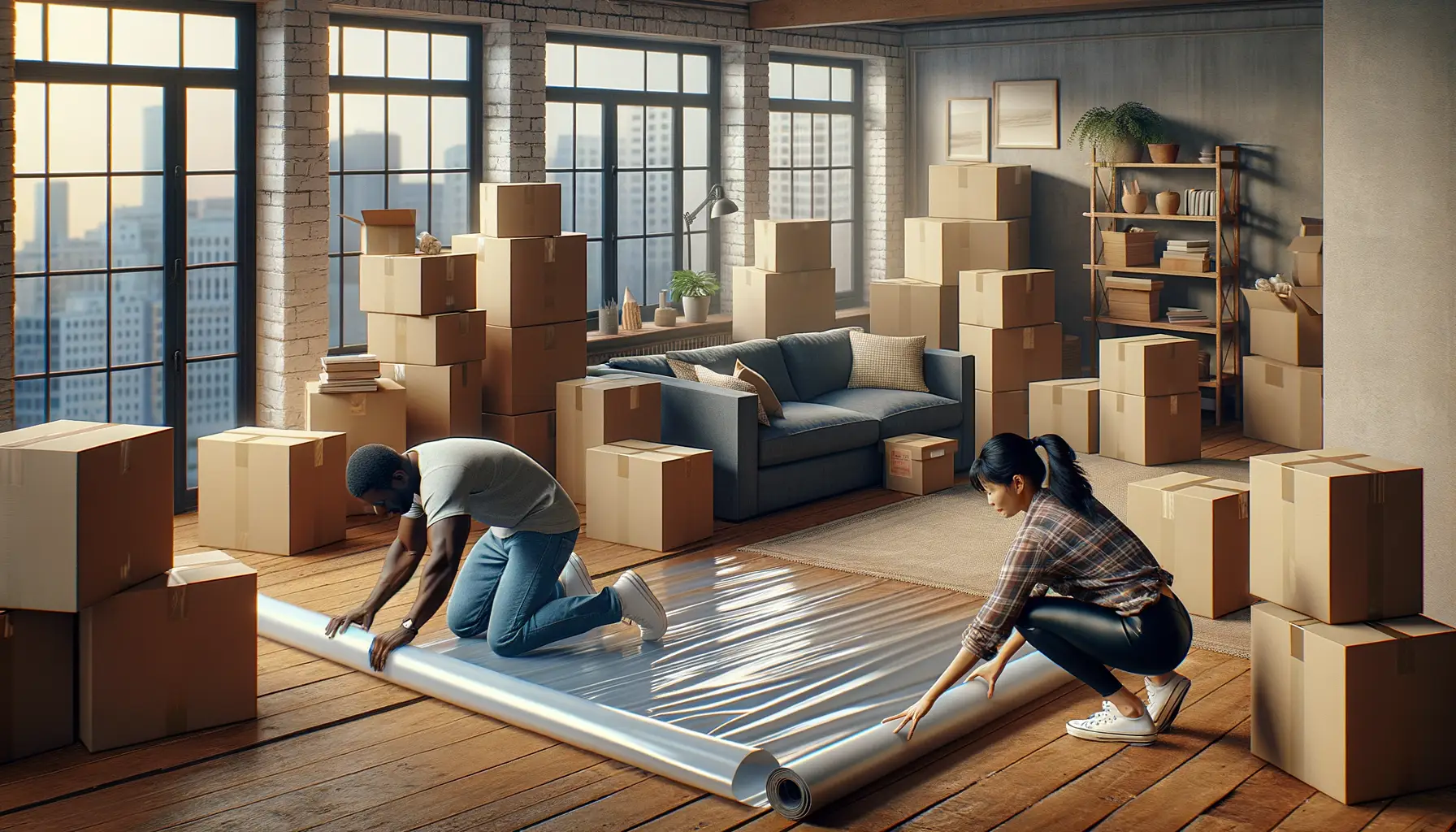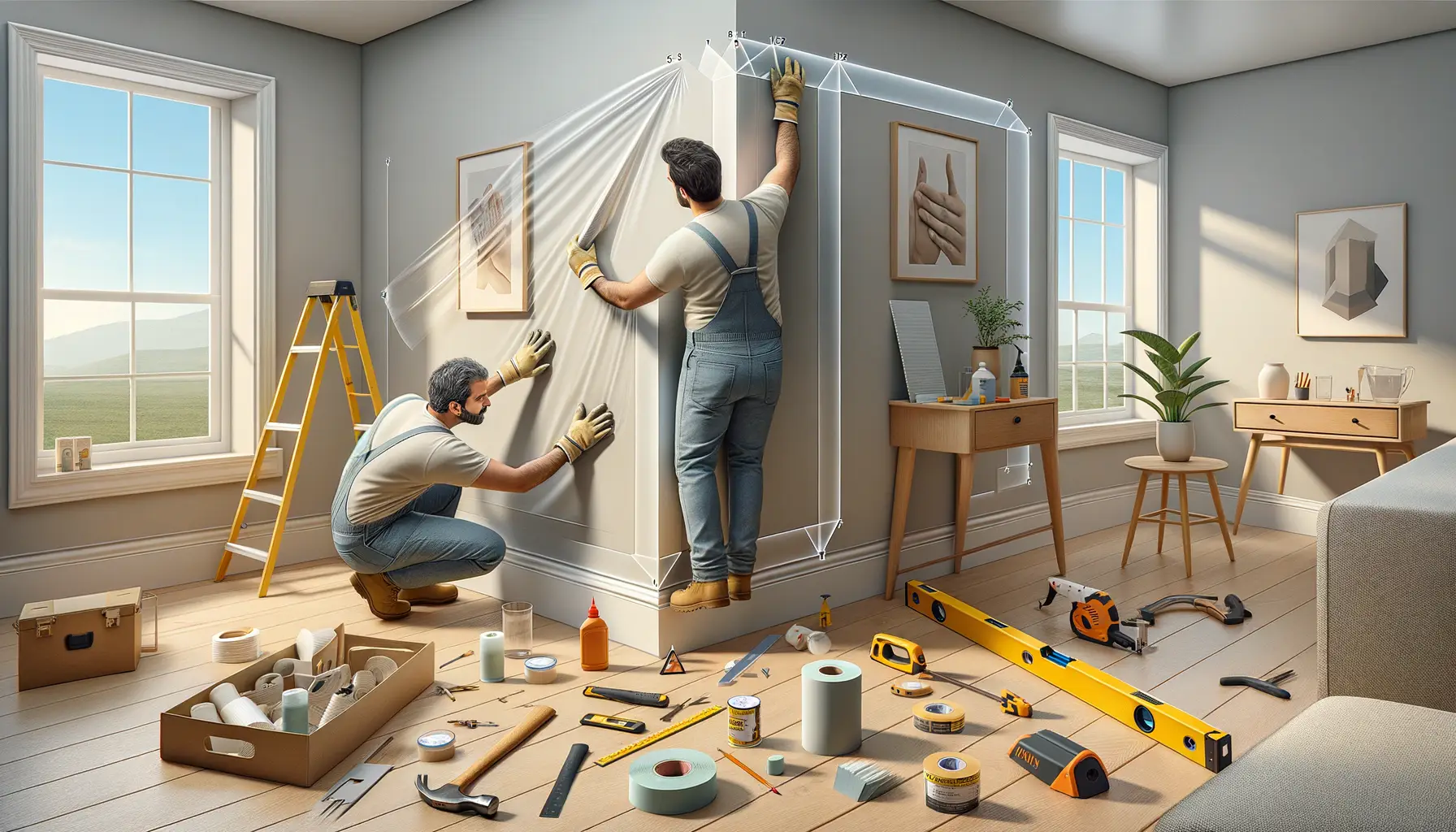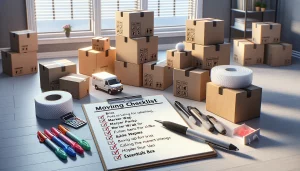Why Protecting Your Floors and Walls is Important During a Move
Prevent Costly Repairs and Heartbreaking Damage
Moving is already a whirlwind of emotions—excitement for a new chapter, stress over logistics, and let’s not forget that bittersweet goodbye to the home you’re leaving behind. But imagine this: as you’re carrying out your favorite bookshelf, one wrong move scratches the hardwood floor you spent years keeping pristine. Or worse, a scuffed wall leaves a permanent reminder of a day you’d much rather have over and done with!
Protecting your floors and walls isn’t just about keeping things pretty—though, let’s face it, who doesn’t love a flawless finish? It’s also about avoiding unexpected repair bills that can pile on financial headaches after you’ve just paid for movers or a security deposit.
Let’s not forget how damage can snowball. A ripped carpet catching under a dolly wheel or a dent in drywall from a poorly judged turn with a couch—these are the rookie mistakes that turn a manageable move into a comedy of errors.
Your goal? Safeguard your space like a pro. Here’s why:
- Preserve value: Whether renting or selling, damage dings profits.
- Prevent extra costs: Avoid splurging on last-minute patchwork.
- Start fresh: Your new place deserves your full attention, not regrets over preventable mishaps.
Preparations Before You Start Moving

Get Your Ducks in a Row Before the Big Day
Before you dive headfirst into moving chaos, let’s talk about preparation. Imagine this: it’s moving day, and your couch legs gouge the wall or your dining table leaves a trail of scratches behind. Heartbreaking, right? A few small steps now can save future-you a world of regret.
First, declutter like your life depends on it. Why protect what doesn’t need to come with you? Go room by room, parting ways with items you haven’t touched in years. Trust me, a lighter load means fewer chances for accidents.
Next, gather your supplies. You’ll need thick blankets, furniture sliders, painter’s tape, and rolls of durable floor protection film. Don’t skimp here—your home deserves more than flimsy substitutes.
- Use cardboard or old rugs in high-traffic areas to shield floors.
- Cover corners and door frames with foam or bubble wrap. Think of these as your home’s “armor.”
Lastly, recruit reliable help. Call in favors from friends or hire professionals who respect your space. Either way, teamwork is the secret ingredient to a smoother move. Ready to roll? Let’s do this!
Protecting Floors During the Move

Keep Floors Scratch-Free with Simple Tricks
Moving day can feel like a marathon – boxes, furniture, heavy appliances all on the move. But imagine this: as you haul your beloved oak dining table across the floor, you hear that dreaded sound – a long, screeching scratch! Protecting your floors isn’t just smart; it’s your secret weapon against extra stress and repair costs.
Let’s start with the essentials. For hardwood and tile surfaces, invest in furniture sliders or felt pads. These little lifesavers are inexpensive and slip right under furniture legs, making everything glide along like it’s skating on ice. Carpets? They need love too! Use heavy-duty plastic film to shield them from dirt and accidental spills.
Here’s a quick list to tackle floor protection like a pro:
- Lay down old blankets or cardboard on high-traffic paths.
- For rainy or snowy days, thick plastic sheeting is your best friend!
- Remove shoes at the door – no exceptions for muddy boots!
Pro tip: Got stairs? Cover edges with non-slip tape and make sure movers carry heavy items rather than dragging them. It’s amazing how these small steps can save your floors from big damage!
Protecting Walls and Corners from Damage

Why Walls and Corners Take the Brunt of the Move
Picture this: You’ve just painted your walls that perfect shade of soft gray, or perhaps that accent wall you agonized over for weeks is now a jewel-toned masterpiece. Then, WHAM—a sofa leg scrapes past, or a dresser corner leaves its not-so-subtle mark behind. Moving doesn’t have to feel like a battle between heavy furniture and pristine walls, but without proper precautions, it often does!
Walls and corners, especially in high-traffic areas like hallways or staircases, tend to become accidental casualties during a move. Protecting them isn’t just about maintaining aesthetics—it’s about preserving all the time, energy, and money you’ve poured into making your space beautiful.
Simple Solutions to Save Your Walls
Protecting your walls doesn’t require fancy tools; some everyday items work wonders:
- Corner guards: These little lifesavers fit snugly over corners, shielding them from scrapes and dents.
- Cardboard sheets: Flattened boxes taped to walls in tight spots can stop rogue furniture edges in their tracks.
- Moving blankets: Wrap bulky, awkward items like mirrors or dressers to create a soft barrier between them and the walls. Genius, right?
Treat your walls like VIPs—they deserve all the pampering while you navigate the chaos of moving day!
Cleaning Up After the Move

Giving Your New Home the Welcome It Deserves
You’ve just survived the chaos of moving day—congratulations! But now that all the boxes are stacked and your furniture arranged, it’s time to tackle the unglamorous yet oh-so-satisfying task: cleaning up. After all, your floors and walls stuck with you through the heavy lifting—they deserve a little TLC.
Start with the floors. That protective padding you laid down? It probably caught more than just scuffs—it’s likely gathered a secret stash of dirt, dust, and maybe even a stray screw or two. Gently peel it away and vacuum or sweep the entire area. For wood or tile floors, a quick mop with a cleaning solution will make them gleam again like they’re thanking you for the rescue mission.
Spot-Check the Walls Like a Detective
Walls are sneaky—they hide their smudges until the light hits them just right. Look closely and you might notice fingerprints near door frames, streaks from a wayward box, or that smear where your couch narrowly avoided disaster. Grab a soft sponge and some mild cleaner. A gentle rub (no scrubbing frenzy here!) should fix most marks without damaging paint.
And before you call it a day, don’t skip the corners. Those sharp angles are magnets for cobwebs and dust. A quick swipe with a broom or microfiber cloth is all it takes to keep them pristine. Nothing says “home sweet home” like clean corners, right?





